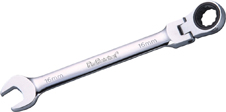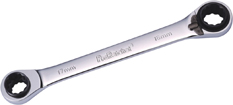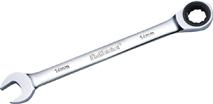Chang Loon Uses R&D to Build High Wrench Industry Profile
Believing religiously that it is quality that gives life to a product and innovation that infuses spirit into it, the Chang Loon Industrial Co., founded in 1978 in the central Taiwan county of Changhua, has used a relentless focus on R&D to build a high profile as a top-caliber supplier of wrenches in Taiwan.


Chang Loon launched its business by making low-end hand tools on an OEM (original equipment manufacturing) basis, quickly accumulating know-how in metalworking and learning the importance of quality as the key to sustainability.
After years of effort, the company has earned a reputation as a supplier of high-quality gear wrenches and bolt cutters which meet international standards, such as ANSI and DIN, and even outperform competing models in torque force and durability. Realizing that quality is not enough, in itself, to compete with rivals from emerging countries that offer low prices, Chang Loon has constantly stressed R&D as a means of moving upmarket. This has assured its success in the line.

Assuring Practicality
In most companies, management is rarely involved in the development of a new product; that is the job of the R&D department. To make sure that each newly developed product is the most suitable and practical tool for users, however, managers and supervisors at Chang Loon enthusiastically play an active part in every stage of an R&D project.
To further enhance the utility of its newly-developed hand tools, Chang Loon provides them to users on a trial basis for real-world experience, and then smoothes out the rough edges based on the resulting feedback. This process goes on until the new products have proved truly useful and needed. This may be costly, but it allows the company to fine-tune products to meet requirements perfectly.
One of Chang Loon's innovations is to build colored rings into the heads of its ratchet wrenches to help users quickly identify which size unit-Imperial or metric-applies to the tool. This practical design, which makes Chang Loon's wrenches easily recognizable, is protected by patent.
Fine Functionality
One of Chang Loon's function-oriented tools is a ratchet wrench series made of chrome vanadium steel, hot drop-forged and heat treated for long life and good looks. But the most noteworthy feature that Chang Loon designed into the wrenches, setting them apart from the competition, is a precise, practical 72-teeth ratchet mechanism.
Each small turn precisely moves the wrench through five degrees, allowing users to work in the narrow spaces involved in such jobs as auto repair, construction, and plumbing. The high degree of precision of movement is enabled by the wrench's highly sophisticated structural design, as well as the extremely precise tolerance built into the ratchet. This makes the company's wrenches more energy-efficient than their rivals. A recognition by foreign buyers of the high quality of these wrenches has helped propel Chang Loon into a leading position in the industry.
Untiring R&D efforts also contribute to success of the company's 3-in-1 bolt cutter, which is meticulously heat treated on the upper side of its two arms to give the cutter a stronger structure and more effective performance. To grasp round bolts tightly, the bolt cutter has patented serrated cutting edges. The tool can be used to cut wires, bolts, and cables without the need for any complementary tool.
The company's easy-to-use hand tools are marketed under its own brand, CHL. Chang Loon chairman Chang Chih-ming notes that the firm has spared no effort to add value to its branded products, because even a fully developed brand will tend to decline and disappear if it neglects innovation and improvement.
Chang Loon ships more gear wrenches than another manufacturer in Taiwan. Its hand tools have proven popular in Europe, Southeast Asia, Latin America, Canada, and the U.S.